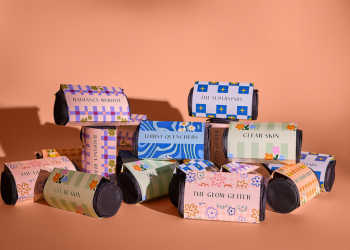
How Light Therapy Treats Acne
Acne forms in our skins pores, the tiny holes in your skin. Each pore contains an oil-producing gland called a sebaceous gland. The oil is good for our skin as it helps to keep our skin youthful and healthy but sometimes our sebaceous glands can overproduce oil and the excess oil, dirt, and dead skin cells can get trapped inside pores and clog them up. Bacteria called Propionibacterium acnes (P. acnes) that live on your skin can also get inside these blocked pores. P. acnes make the clogged pores swell up into bumps called acne.
One way to kill the bacteria and clear up pimples is with light therapy. The bacteria in your skin are sensitive to the blue light spectrum. Research shows that blue light penetrates skins hair follicles and pores, unlike topical treatments that work to ease inflammation and bacteria on the surface of the skin. When the blue lights are on your skin, substances form that kill the bacteria before it begins to feed on the oil glands. Light therapy also shrinks the oil glands in your skin, so your skin produces less pore-clogging oil, preventing future breakouts.
What is light therapy?
Light therapy, also known as phototherapy, is a non-invasive treatment that uses different wavelengths of light to improve various skin conditions, including acne. It involves exposing the skin to specific types of light for a certain period of time to achieve therapeutic benefits.
How does light therapy work?
Light therapy works by targeting the bacteria that contribute to acne breakouts, reducing inflammation, and promoting skin healing. Different colors of light have different effects on the skin:
Blue light
Blue light targets the bacteria called Propionibacterium acnes, which is one of the main causes of acne. When the bacteria absorb the blue light, it produces reactive oxygen species that kill the bacteria. This helps to reduce the number of acne-causing bacteria on the skin.
Red light
Red light has anti-inflammatory properties and helps to promote healing. It penetrates deeper into the skin and stimulates the production of collagen, which can improve the appearance of acne scars.
Combination light therapy
Some light therapy devices use a combination of blue and red light to target both the bacteria and inflammation associated with acne. This combination treatment can be more effective in reducing acne lesions and improving overall skin condition.
Benefits of light therapy for acne
Light therapy offers several benefits for individuals with acne:
- Non-invasive: Light therapy is a non-invasive treatment option, which means it doesn't require any incisions or injections.
- No downtime: Unlike some other acne treatments, light therapy doesn't require any downtime. You can resume your daily activities immediately after the treatment.
- Safe: Light therapy is generally considered safe for most people. It doesn't cause any significant side effects when used as directed.
- Effective: Many studies have shown that light therapy can effectively reduce acne lesions and improve skin texture.
How to undergo light therapy
Light therapy can be performed at a dermatologist's office or using at-home devices. If you choose to undergo light therapy at a dermatologist's office, a trained professional will administer the treatment. They will determine the appropriate light intensity and duration based on your skin condition.
If you prefer to use an at-home device, it's important to follow the instructions carefully and use the device as directed. Consistency is key to achieving optimal results.
Conclusion
Light therapy is a promising treatment option for individuals with acne. By targeting acne-causing bacteria and reducing inflammation, it can help improve the appearance of acne and promote skin healing. Whether you choose to undergo light therapy at a dermatologist's office or use an at-home device, it's important to follow the recommended guidelines for safe and effective treatment.
I recommend also using Red Light as an acne treatment in combination with Blue Light because it works to soothe inflammation and redness.


